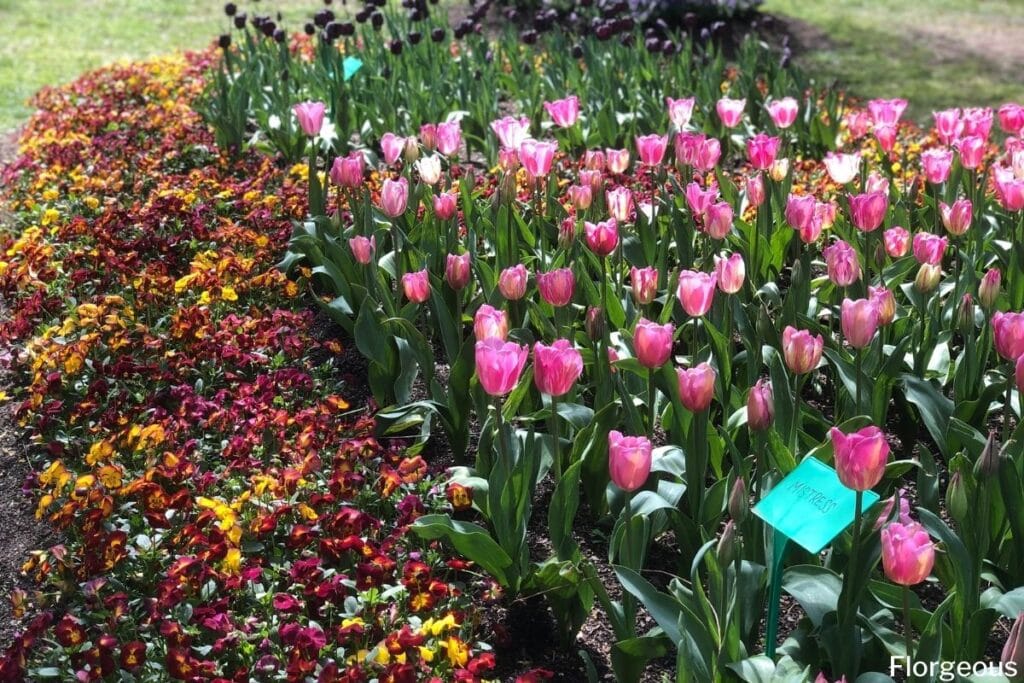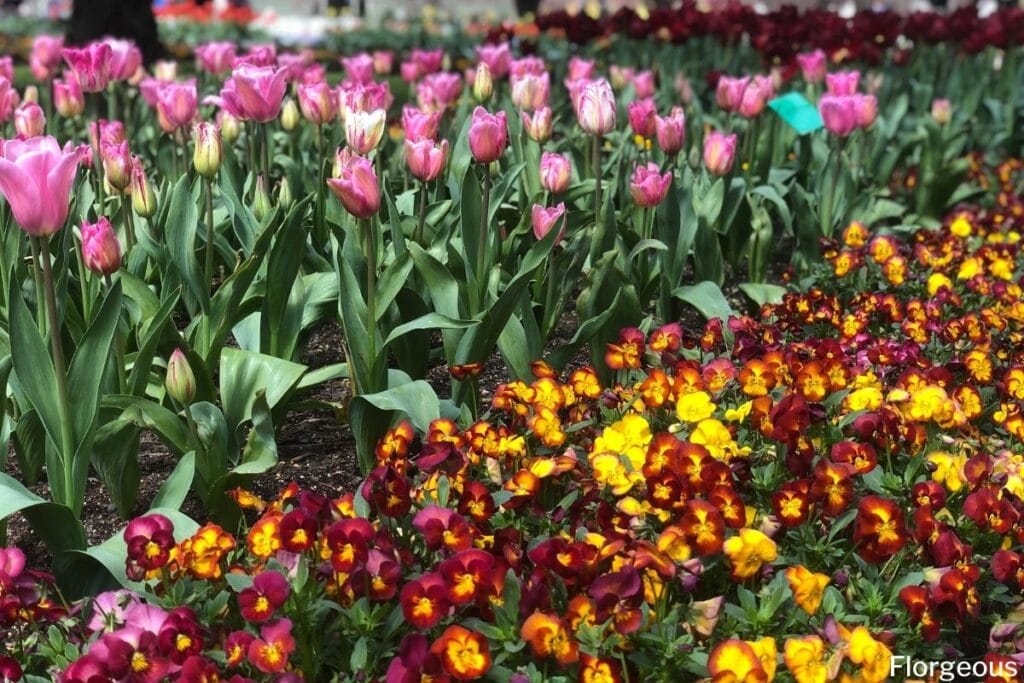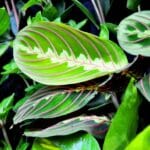When it comes to choosing plants for the garden, it’s important to note that not all plants play nice. If you’re looking for flowers that grow well together, you may want to consider reading this article carefully to know good companion plants and flowers.
One of the best parts of spring is watching gardens start to bloom. Each one is uniquely different from the next one. You may be wondering how you, too, can create a vibrant garden.
Help Your Garden Grow With Companion Planting

Garden bloggers and websites talk about a variety of ways to create the most show-stopping garden. One common idea that is mentioned is companion planting. This method is usually used in vegetable gardens but can also be used in flower gardens.
A vegetable garden is usually paired with plants that repel insects like cucumber beetles, squash bugs, and Colorado potato beetles and attract beneficial insects.
Flowers like marigolds are excellent at repelling Japanese beetles, Mexican bean beetles, and flea beetles for instance. Green beans are also known for repelling Colorado potato beetles.
In vegetable gardens, it’s beneficial to plant tomato plants, Brussel sprouts, cabbage family, bush beans, and pole beans together with marigolds to deter pests. Make sure to separate members of the same plant family to prevent competition for soil nutrients.
Companion planting combinations of flowers is a great way to improve your garden. This method accentuates colors, provides nutrients, and repel pests. Flowers that contrast in shape, texture, and color can add unexpected, breathtaking depth. Beneficial insects like pollinating insects are attracted to some flowers, while destructive pests are repelled by others.

Flowers that create cooperation with other flowers should be the focus of companion gardens. You should also consider the conditions needed for each type of flower to grow. The process of companion gardening does have a learning curve. This article will provide you with a list of flowers that pair well together and help you start the process.
What Is Companion Planting, And What Are Its Benefits?

Companion planting as a method of gardening that uses the cooperation of plants to achieve optimal health and vitality. Plants that cooperate well with each other protect the other from pests and enhance the other’s growth.
Companion Planting Takes Advantage of Blooming Time

Companion planting practices take advantage of each flower’s blooming time, soil and light needs, and colors. These focuses create a garden that pops throughout the gardening season. You can plant a late bloomer in the same spot as an early bloomer to guarantee an entire garden of color. You can also use a tall plant to contrast with a short plant.
Companion Planting Reduces Pest Problems

Another benefit of companion planting is how each plant deals with pests. Gardeners who use companion planting have learned about its benefits.
One benefit is that destructive pests are deterred. At the same time, helpful insects, such as bees and butterflies, are attracted. These natural properties allow neighboring flowers to thrive.

What Flowers To Plant Together for Companion Planting

Just like people, plants also live healthier lives if they are surrounded by others. These companions should bring out their best qualities and compliment each other. It can take a lot of trial and error to decide which flowers can cohabitate the best. You can’t go wrong using these flower combinations that experts recommend.
Here are the best flowers that grow well together for companion gardening:
1. Geraniums and Roses

Roses come in a variety of colors. While beautiful, they are prone to disease and are often eaten by aphids and other beetles. Roses thrive best in sunny locations with well-drained soil. Their companion plant should do the same.
Geraniums provide long-lasting color. They have lacy, dark green leaves with different colored blossoms throughout spring and summer. When paired with roses, their smell helps keep pests away from roses.
Roses and geraniums are a timeless pair. Geraniums help fill in the spaces between the thorny rose stems. This relationship is excellent not only for pest control but also for how each flower’s beauty reinforces the beauty of the other.
2. Coneflowers and Black-Eyed Susans
Coneflowers and black-eyed Susans are another of those classic garden pairs. These flowers are no-fuss. They can withstand high heat and humidity, dry soil, and partial shade. Coneflowers and black-eyed Susans can bloom from late spring into early fall.
Coneflowers grow up to three feet tall. They attract butterflies and other pollinating insects with their purplish-pink flowers. These flowers will add color to your garden all summer long with contrasting tones of pink and yellow.
3. Astilbe and Hosta
A perennial flower, astilbe, is at home in a moist, shady garden. Astilbe has foliage similar to ferns and lacy spirelike blossoms of red, pink, white, and purple. It thrives in soil that is rich in organic material.

Hostas are also shade-loving perennials. They are mainly grown for their colorful leaves. Their size can vary from small plants to plants that are four feet tall. A hosta flower sits on top of the plant and resembles a lily with a long stem.
Astilbe and a hosta planted together in shady locations can provide a pop of color. Their bright flowers and foliage lighten up dark spots in your garden.
4. Hydrangeas and Daylilies
Hydrangeas bloom in the late spring into fall. These flowering shrubs can grow up to 15 feet. They grow best in soil that has a large amount of organic material. Soil that has good drainage is vital. While not common, hydrangeas can attract pests if they are under stress.
One of the most versatile flowers, daylilies can grow in almost any environment. Like hydrangeas, daylilies prefer moist, well-drained soil. They act as a natural repellent to aphids and other beetles.
Pairing hydrangeas and daylilies are a great way to create a border wall around your garden. The mid-summer blooming time of daylilies contrasted with the late spring blooming time of hydrangeas creates a weaving of color amidst a backdrop of green foliage.
See more: Which flowers can be planted alongside Hydrangeas besides Daylilies?
5. Daffodils and Amsonia
Daffodils are one of the best companion plants. One of the first flowers to bloom in the spring, daffodils provide early color. They can be planted in a garden that already has established flowers. Insects, deer, rabbits, and other garden pests are deterred by daffodils.
Amsonia thrives in the same climates as daffodils. Their blue flowers bloom around the time that daffodils begin to fade. When paired with daffodils, larger Amsonia plants can help hide the brown foliage left behind when daffodil flowers wilt.

Amsonia foliage turns golden yellow in fall. This late color change creates a beautiful accent on the falling leaves.
6. Hibiscus and Bee Balm
Hibiscus is another type of flowering shrub. Butterflies and hummingbirds are attracted to their large flowers, which need consistent water and full sun. Moist soil helps you cut down on the amount you need to water them.
Bee balm flowers have tubular petals and are daisy-shaped. They range in color, but the most common are red, pink, white, and purple. Like hibiscus, they also attract butterflies and hummingbirds. Also preferring moist soil, bee balm is a perfect pairing to the hibiscus shrub.
7. Iris and Phlox
Irises bloom in late spring. These brightly colored flowers attract butterflies and hummingbirds. Irises bloom best in full sun. They prefer moist, nutrient-rich soil. Irises are best paired with flowers that blossom later. However, you can pair them with spring flowers that have contrasting, complimentary colors.
Phlox are tall perennials. Their clusters of white, purple, or pink flowers bloom in the summer. Like irises, they also love the sun and need moisture. They pair well with irises because they bloom after the irises are done for the season.
8. Tulips and Hyacinth
Tulips are one of the first flowers to bloom in the early spring. These colorful flowers prefer neutral, dry soil and afternoon sun. Tulips come in many colors and are best recognized for their cup shape.

Hyacinth is also a spring-blooming flower. They have a robust and far-reaching scent that can attract many pollinating insects. Like tulips, they also prefer a lot of sun and neutral, dry soil. Hyacinths have spiky stalks of flowers. When hyacinth is mixed in with the cupped tulip, these spiky flowers can provide your garden with texture.
9. Daisies and Petunias
Daisies flower from late spring into the early fall. They do best in soil that is well-draining and nutrient-rich. Thriving in the full sun, they come in a variety of colors. They are best known for their yellow centers.
Like daisies, petunias need full sun and nutrient-rich, well-draining soil. They flower a little bit earlier than daisies. Their broad, trumpet-shaped flowers come in almost every color.
When planting daisies and petunias together, you must pay attention to their colors. Both flowers come in a wide range of colors. Choose colors that complement each other, like white and purple.
10. Merrybells and Virginia Bluebells
This classic pairing provides a yellow and blue color combination that is sure to pack a punch. Blooming in early April, Merrybells can reach more than two feet in height. Their leaves have a distinct wilted appearance.
Bluebells can grow to be 18-inches tall. The bluebell flowers turn pink as they age. Shifting from blue to pink can create a two-tone appearance on a single blossom. They pair well with the yellow Merrybells because they mirror the wilted appearance.
11. Marigolds and Lavender
The bright orange color of marigold flowers adds personality to your garden in the summer and early fall. While beautiful, the marigold’s distinctive aroma deters rabbits, beetles, aphids, and other pests. Marigolds are drought-tolerant. They thrive in sunny, hot weather.
Lavender can grow between one and three feet tall. The purple of lavender is a natural complement to the orange of marigolds. Like marigolds, lavender is also drought tolerant. Lavender attracts bees and butterflies to help pollinate its neighbors.

While the pairs listed above work well together, each flower can also be paired with others on this list. Tulips and daisies work well together. Lavender can be paired with almost anything. The best part of gardening is deciding which flowers you want to plant.
It is important to choose flowers that require similar conditions. Your personality also needs to be reflected. This list is useful as a springboard to cultivate your creativity.
What Flowers Grow Well Together in Pots for Companion Planting?

Flower pots are versatile. You can bring them indoors or create a mini garden if you don’t have a lot of space. There are many different combinations of flowers that work well together in flower pots. Before planting flowers in a pot, there are a few things you should consider.
Creating contrast and balance is essential. The size of the flowers should be proportionate to the size of the pot. Flowers of contrasting sizes help fill the space. Having a tall plant, a filler plant, and a trailing plant near each other in a single pot creates a sense of unity.

Color is another important thing you should consider when filling a flower pot. Contrasting colors create drama and impact. Different shades of the same color create harmony. Choose colors that reflect the emotion you want to evoke.
A mix and match of any of the following companion planting chart can create a beautiful mini garden pot.
| Tall Plants | Filler Plants | Trailing (or Spiller) Plants |
|---|---|---|
| Hibiscus Bougainvillea Canna lily Princess flower | Fuschia Celosia Bouvardia Delphinium | Alyssum Bidens Calibrachoa or “Million Bells” Zinnias |
This is not a complete list of flowers to choose from. It is, however, a shortlist to get you started.
Choosing one flower from each of the above categories is a great way to learn the basics of potting flowers. Remember that having one focal point is vital. The remaining flowers should complement the ones you choose to highlight.
Companion Planting in the Flower Garden

The idea of companion planting is not a new one. Planting flowers and other plants together can create a mutually beneficial relationship.
Certain plants have natural repellent properties that can keep pests from eating other plants. Other plants can attract pollinators, allowing their neighbor plants to flourish. Still, others can help balance out the acidity in the soil. Flowers that cohabitate well can also provide each other with the nutrients they need to grow.
Companion planting is an easy way to create a vibrant garden. Whether you are a beginner gardener or have been gardening for years, your garden can be a neighborhood highlight. It is crucial to consider both the color of your flowers and the conditions they need to grow.

The pairings listed above are by no means an exhaustive list. If you are an experienced gardener, you may have already discovered that some flower companions work better than others. If you are a beginning gardener, you may find that some trial and error is needed.
For beginners, this list is a great place to start, however. Pick your favorites to plant your dream garden. If your pairings don’t work, try again. Do not give up. The magic of gardening lies ahead.
Is Companion Planting Right For You?

Now that you know all the benefits of companion planting in the vegetable garden, from attracting beneficial insects to fixing nitrogen with plants like bush beans, it’s time to get started!
Use this companion planting guide and our companion planting chart to figure out which companion plants are right for you. From tomato plants to squash plants, just about every garden has a spot for these best friends. Get started with companion planting today!







